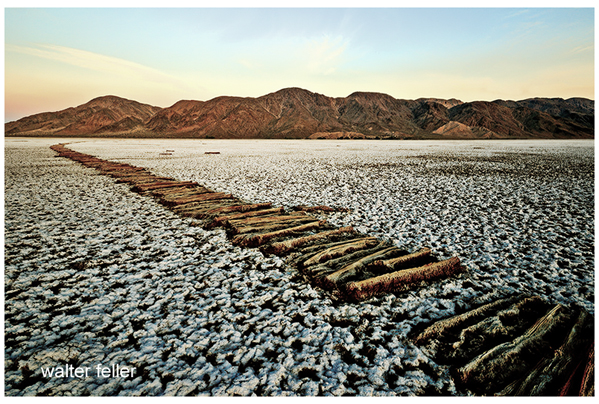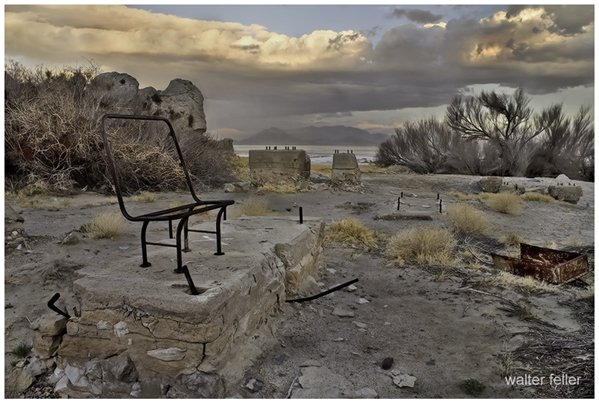Railroads around the Mojave National Preserve
The smallest railways

Completion of the
Tonopah & Tidewater
in 1907 led
to construction of two tiny little railways connected with
its line. These were both at Soda Station, which is to say
Soda Springs, on the west shore of Soda Lake
south of
Baker, California. The
Tonopah &
Tidewater skirted the eastern shore of
Soda Lake
from the south, and just north of Soda
Springs, cut across a portion of the normally
dry, white lakebed to Baker Station. Soda
Lake, of course, was a dry lake topped with
white chemical salts, and with railroad transportation
at hand, two groups of entrepreneurs
decided to try to make a business of trying
to harvest, purify and sell those chemical
salts from the vicinity of Soda Springs. Thus
it came to pass that by May 1907 the Pacific
Coast Soda Company was building sheds
and other structures at the south end of Soda
Lake, and in October 1907 Russ Avery sold
his 22 soda claims southeast of Soda Springs
to the company.
The Los Angeles Mining
Review of August 8, 1908, carried an article
describing the plant the company had built
just south of Soda Springs and was in the process
of enlarging, and the “narrow gauge track
a mile and a half long”
which it said extended out
onto the lakebed. What sort
of motive power this little
railroad used is unknown,
although it seems likely to
have been a four-wheeled
gasoline locomotive. The article in the mining journal is
not the only evidence of the little railroad, for a mile and
a half long grade, much of it still carrying little wooden
ties, still lies on the lake today, and measuring the holes
for spikes in the ties suggests that it had a gauge of 30
inches between the rails.

A few years later, around 1911, the Pacific Salt and
Soda Company built a plant north of Soda Springs, to
process the chemical salts, and it reportedly had a little
railroad which, although it did not extend out onto the
lake surface, did serve the plant itself. Measuring again
spike holes in a surviving tie, this plant apparently had a
railroad or tramway with a track gauge of 36 inches.

There is little information regarding either of these
companies with respect to how long they survived or
whether they made any money from their salt-processing
plants, but from the remains today, both seem to have
invested a fair amount of money in building such plants.

Tonopah & Tidewater